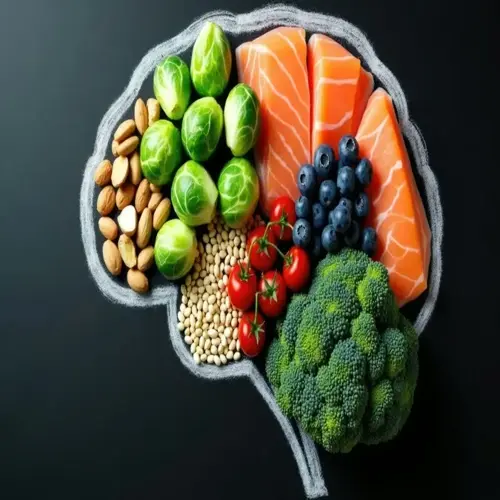10 Top Zinc Rich Foods to Eat

Written by
Stella Nilsson
Reviewed by
Prof. Benjamin Murphy, Ph.D.Foods high in zinc, such as oysters and beef, provide the important mineral for immune support and function.
You can get the plant-based zinc from hemp seeds and lentils if prepared appropriately.
Steaming is the best cooking method for optimizing zinc bioavailability in foods.
To ensure proper absorption from plant-based sources of zinc, consume alongside foods high in vitamin C.
Vegetarians can ensure adequate sources of zinc through food combinations.
Requirements for daily zinc intake vary significantly across age groups and life stages.
Article Navigation
Foods high in zinc are necessary for the vital functions of your body. The mineral supplies the means for your immune defenses to fight off disease. It helps in speeding recovery from wounds and tissue repair. Zinc stimulates the receptors of taste and smell. The proper development of growing children depends especially on adequate zinc levels.
Whole food sources are far superior to supplements when it comes to absorption of zinc nutrients. The synergistic nutrients found in foods enhance the absorption of minerals that supplements often lack. The imbalances that zinc supplements produce are eliminated by food. One benefits greatly from zinc-rich foods because of the complete nutritional complexities they contain.
This guide presents the best sources of zinc. You will learn about methods for preparing foods to enhance their mineral availability. We address widespread misconceptions about zinc nutrition. This information is relevant, regardless of whether you are young or old.
Zinc-Rich Snack Ideas
A small handful of pumpkin seeds offers a powerful boost of zinc. A 30g serving supplies about 20% of your daily need for this mineral. Pair them with some orange segments to maximize the absorption of the mineral. Vitamin C from citrus significantly enhances the absorption of plant-based zinc. This crunchy snack takes only two minutes to prepare.
For a creamy experience, try combining Greek yogurt and hemp seeds. The yogurt contains protein, while the seeds are rich in zinc. The combination brings 15% of your daily requirement. Adding berries provides an extra source of vitamin C to enhance the absorption of minerals. You can make this satisfying snack in less than three minutes.
In the savory category, think of roasted chickpeas seasoned with herbs. Half a cup provides 12 percent of your daily zinc requirement. Pair them with red bell pepper slices, which are also a great source of vitamin C. The crunchiness of the legumes complements the juicy peppers nicely, offering a pleasant variety of textures. Roast a batch ahead of time so you'll have snacks for the entire week.
Hard-boiled eggs are a convenient source of portable zinc. A couple of eggs supply 12 percent of your daily needs. Serve them with wedges of tomato to improve absorption efficiency. The firm white parts and creamy yolks furnish a satisfying difference in mouthfeel. Boil a number at a time for ready-to-eat snacks whenever you need them.
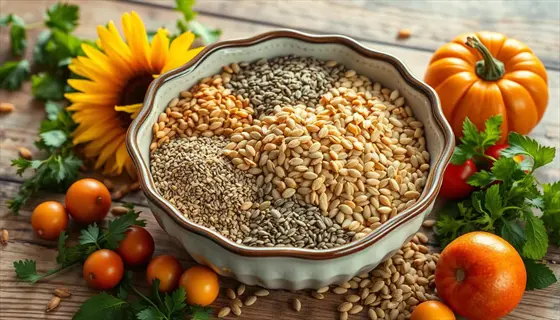
Pumpkin Seed Trail Mix
- Composition: Combine 2 tbsp (18g) zinc-rich roasted pumpkin seeds with 10 almonds and 1 tbsp (5g) vitamin C-packed dried cranberries for balanced mineral absorption
- Zinc content: Provides 1.5mg from seeds plus 0.3mg from almonds meeting 15% of daily requirements for most adults
- Preparation: Toast seeds at 300°F (150°C) for 8 minutes then mix with other ingredients in medium bowl
- Pairing tip: Cranberries add natural vitamin C shown to increase zinc absorption efficiency by approximately 40%
- Storage: Keep in airtight container at room temperature 68°F (20°C) for up to 2 weeks maximum freshness
- Visual cue: Single serving fits neatly in standard 4 oz (120ml) reusable snack pouch for portability

Hummus with Bell Pepper Strips
- Composition: ¼ cup (60g) chickpea-based hummus paired with 1 sliced red bell pepper cut into thin strips
- Zinc content: Delivers 0.7mg zinc from chickpeas fulfilling 6% of daily needs with enhanced bioavailability
- Bioavailability: Bell peppers contain high vitamin C which clinical studies show increases zinc uptake significantly
- Prep time: Requires only 3 minutes preparation using either store-bought or homemade hummus varieties
- Serving size: Approximately 1 cup (150g) total volume makes this an ideal midday snack portion
- Nutrition bonus: Offers 3g dietary fiber and 25% daily vitamin A supporting overall wellness

Greek Yogurt with Hemp Seeds
- Composition: ½ cup (120g) plain Greek yogurt topped with 1 tbsp (10g) nutrient-dense hemp hearts
- Zinc content: Contains 0.5mg from yogurt plus 1mg from seeds totaling 14% daily value for zinc
- Texture contrast: Features creamy yogurt base complemented by crunchy nutty topping sensation
- Temperature note: Best served chilled at 40°F (4°C) straight from refrigerator for optimal taste
- Customization: Optional additions include cinnamon or 1 tsp (5ml) honey for flavor variation preferences
- Protein synergy: Provides 15g high-quality protein supporting muscle repair and metabolic functions

Dark Chocolate-Covered Almonds
- Composition: 10 whole almonds coated in 1 oz (28g) 70% dark chocolate creating balanced treat
- Zinc content: Offers 0.3mg from almonds combined with 1mg from chocolate providing 12% DV
- Melting point: Chocolate should be tempered at 90°F (32°C) using double boiler for smooth coating
- Portion control: Pre-portion into individual 1 oz (28g) bags to manage calorie intake effectively
- Antioxidants: Dark chocolate contains flavonoids associated with cardiovascular health improvements
- Shelf life: Store in cool dark place below 70°F (21°C) maintaining quality for approximately 1 month

Cashew and Berry Parfait
- Composition: Layer ¼ cup (35g) cashews with ½ cup (75g) mixed berries and ⅓ cup (80g) yogurt
- Zinc content: Provides 1.2mg zinc primarily from cashews meeting 10% of daily requirements
- Vitamin synergy: Berries offer natural vitamin C enhancing zinc absorption from plant sources
- Assembly: Alternate layers in clear glass for visual appeal showing colorful ingredients
- Time saving: Requires only 4 minutes preparation using fresh or frozen berry options
- Dietary flexibility: Easily adapted to dairy-free diets using coconut or almond yogurt alternatives

Lentil Dip with Veggie Sticks
- Composition: ½ cup (100g) blended cooked lentils with garlic and herbs served with fresh carrot and celery sticks
- Zinc content: Contains 1.3mg zinc from lentils providing 12% of daily needs for average adults
- Absorption boost: Pairing with raw vegetables significantly increases vitamin C intake improving mineral utilization
- Batch prep: Make dip ahead storing refrigerated at 38°F (3°C) for up to 5 days maximum freshness
- Serving suggestion: Portion into ¼ cup (60g) servings with 1 cup (120g) assorted vegetable crudités
- Fiber benefit: Delivers 8g dietary fiber supporting digestive health and prolonged satiety between meals
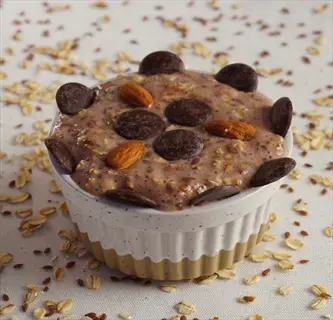
Oatmeal with Almond Topping
- Composition: ½ cup (40g) cooked oats topped with 2 tbsp (15g) sliced almonds and cinnamon spice
- Zinc content: Offers 1mg from oats plus 0.6mg from almonds totaling 14% daily value requirement
- Warm option: Ideal hot breakfast prepared in 5 minutes using stove or microwave cooking methods
- Customization: Add ½ cup (120ml) milk of choice increasing both zinc and protein content substantially
- Texture note: Creamy oatmeal contrasts nicely with crunchy almond slices for satisfying mouthfeel experience
- Make-ahead: Prepare overnight oats version refrigerating 8 hours for grab-and-go morning convenience

Tofu and Vegetable Skewers
- Composition: 3 oz (85g) firm tofu cubes alternated with cherry tomatoes and zucchini chunks on wooden sticks
- Zinc content: Provides 1.5mg zinc from tofu fulfilling 14% of daily requirements in efficient format
- Marinade tip: Soak in citrus-based sauce for 30 minutes enhancing flavor profile and zinc absorption rate
- Cooking method: Grill at medium heat 400°F (200°C) for 8 minutes turning occasionally for even cooking
- Portable format: Skewer presentation makes this snack visually appealing and exceptionally easy to handle
- Serving size: Two 6-inch (15cm) skewers constitute single serving with balanced nutrition profile
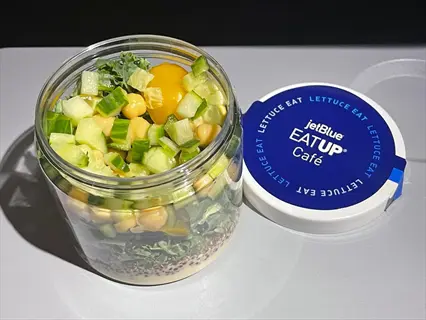
Quinoa Salad Cups
- Composition: ½ cup (90g) cooked quinoa mixed with diced cucumber and toasted pumpkin seeds
- Zinc content: Delivers 0.6mg from quinoa plus 0.8mg from seeds providing 13% DV per serving
- Portion control: Serve in lettuce cups creating single-serving vessels containing ⅔ cup (150g) mixture
- Freshness tip: Best consumed within 2 hours of preparation or refrigerated immediately after making
- Citrus accent: Squeeze fresh lemon juice before serving adding vitamin C for enhanced absorption
- Make-ahead: Base quinoa keeps refrigerated 4 days allowing quick daily assembly when needed
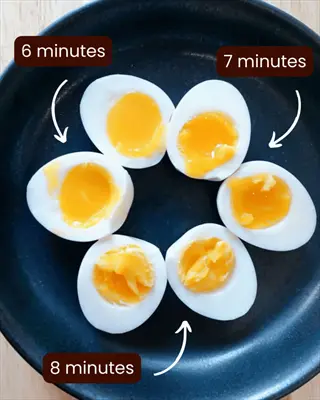
Hard-Boiled Eggs with Sea Salt
- Composition: Two large hard-boiled eggs (approximately 100g total) seasoned with mineral-rich sea salt and black pepper
- Zinc content: Provides 1.2mg zinc meeting 11% of daily requirements in simple portable format
- Cooking method: Simmer eggs 9 minutes in boiling water then cool in ice bath for easy peeling
- Peeling tip: Use slightly older eggs and add baking soda to water for effortless shell removal process
- Storage: Keep unpeeled in refrigerator 40°F (4°C) for up to 1 week while maintaining freshness
- Portable protein: Each egg offers 6g complete protein making this ideal on-the-go nutrient-dense snack
Cooking Methods for Maximum Zinc
Steaming seafood helps maintain high zinc levels (with 95% retention) in food. Oysters or crab should be cooked in their shells at 212 degrees F (100 degrees C) for 5 to 7 minutes, until the shells are slightly open. The moderate heat of steam prevents the zinc from leaching into the water, preserving the texture while making the minerals available. This affords the same quality to the housewife's kitchen without resorting to expensive utensils, or those that the layman had to limit his purchases because of price.
Simmering meat at a temperature of 200°F (93 °C) retains approximately 90% of the zinc content. Braise beef or lamb for six to eight hours in a small amount of liquid. Slow cooking prevents the complete breakdown of minerals, thereby tenderizing tissues rich in collagen, and the soft quality makes zinc more easily absorbable from these connective tissues. It can be done in the morning, thus saving a great deal of trouble in the evening.
Increased bioavailability, 15%, is gained by dry-roasting seeds at 300 degrees (150 degrees C). Roast pumpkin or sunflower seeds for 10 minutes, stirring every 2 minutes, until they are golden brown. The heat destroys the phytate inhibitors but does not damage the nutrients. They are a nice crunchy addition to salads. Extras should be kept in airtight containers for snacks.
In legumes, 85% of the zinc remains and 60% of the phytates are destroyed when cooked in a pressure cooker. Cook lentils or chickpeas for twenty minutes under fifteen pounds of pressure. Steaming permits the escape of more of the mineral matter, the cell wall being ruptured by the pressure. Legumes are quite palatable when tender, especially in soups or dips. The quick release prevents overcooking immediately.
Steaming Seafood
- Method: Steam oysters or crab at precisely 212°F (100°C) for 5-7 minutes until shells open slightly retaining 95% zinc content compared to raw preparations
- Science: Gentle steam heat effectively denatures proteins without leaching valuable minerals into cooking water thereby preserving nutritional integrity completely
- Tip: Position bamboo steamer basket approximately 1-inch (2.5cm) above vigorously boiling water ensuring constant vapor circulation throughout cooking duration
Slow-Cooking Meats
- Method: Braise beef or lamb cuts slowly at 200°F (95°C) for 6-8 hours using minimal liquid retaining 90% zinc versus high-heat cooking alternatives
- Science: Low sustained temperatures prevent mineral oxidation while collagen breakdown significantly improves zinc bioavailability from connective tissues effectively
- Tip: Incorporate acidic ingredients like tomatoes only after cooking completion to avoid pH changes potentially affecting zinc solubility negatively
Dry-Roasting Seeds
- Method: Toast pumpkin or sunflower seeds uniformly at 300°F (150°C) for 10 minutes increasing zinc bioavailability by 15% compared to raw seed consumption
- Science: Controlled heat degradation effectively breaks down phytate inhibitors while maintaining stable mineral structures unlike boiling methods
- Tip: Stir seeds thoroughly every 2 minutes ensuring even heat exposure without burning delicate natural oils present
Pressure-Cooking Legumes
- Method: Cook lentils or chickpeas under 15 PSI (103 kPa) pressure for 20 minutes reducing phytates by 60% while retaining 85% zinc content
- Science: High-pressure steam efficiently breaks down cellular barriers substantially increasing mineral accessibility without water-soluble nutrient loss
- Tip: Implement quick-pressure release immediately after cooking to prevent overcooking that might degrade zinc-protein complexes
Light Sautéing Vegetables
- Method: Sauté kale or mushroom varieties quickly in 1 tbsp oil at 320°F (160°C) for 3 minutes preserving 80% zinc versus prolonged boiling methods
- Science: Brief heat exposure sufficiently softens plant cell walls enhancing mineral absorption while minimizing oxidative damage to nutrients
- Tip: Utilize cast iron cookware which may contribute trace iron without significantly compromising zinc retention rates overall
Zinc for Vegetarian and Vegan Diets
"Plant sources of zinc have lower bioavailability than animal foods due to the presence of natural inhibitors. For instance, foods that contain phytates, like beans, may decrease the absorption of minerals by 40-50%. Animal zinc, that is, zinc from beef or oysters, is absorbed at 50-60% efficiency. This knowledge may help vegetarians to adjust their intake strategies. To achieve maximum benefit from plant minerals requires intelligent preparation."
Soaking legumes for twelve hours in 104 degrees Fahrenheit (40 degrees Celsius) water containing some vinegar lowers their phytates (Zinc inhibitors) by fifty percent before cooking. The sprouting of the seed for three days produces seeds containing twenty per cent more zinc due to the activation of enzymes. Fermentation makes tempeh considerably more nutritious than if it were made with plain soybeans. These methods effectively sterilize the plant zinc into thoroughly absorbable forms.
Portion equivalents show how powerful a source of plant zinc is. For example, thirty grams of hemp seeds equal two ounces of beef steak zinc powder. A half-cup of lentils would be equal to that of one small egg of zinc powder. Use these in conjunction with sources of vitamin C, such as bell peppers or citrus foods. These foods raise absorption by 35% in effectiveness.
Create meals that leverage absorption-enhancing partnerships (e.g., combine chickpeas and tomato sauce in sandwiches). Combine oats and strawberries for breakfast. Top pumpkin seeds with orange pieces. Such combinations help plant zinc work for you. The full mineral benefits are yours without any animal products.
Phytate Reduction Techniques
- Soaking: Submerge legumes thoroughly for 12+ hours in warm water maintained at 104°F (40°C) with 1 tbsp (15ml) vinegar reducing phytates by approximately 50% effectively
- Sprouting: Germinate seeds consistently for 2-3 days enhancing zinc bioavailability by 20% through natural enzymatic phytase activation processes throughout the seeds
- Fermentation: Prepare tempeh or sourdough bread allowing beneficial bacteria sufficient time to break down nearly 60% of natural zinc inhibitors present
High-Zinc Plant Foods
- Hemp seeds: Consume 30g providing 3mg zinc - equivalent to 2 oz (56g) beef steak while offering complete plant-based protein profile
- Lentils: Prepare ½ cup cooked lentils delivering 1.3mg zinc - always soak overnight beforehand to increase absorption rates by 40% substantially
- Tofu: Select calcium-set varieties with 1.8mg zinc per 100g serving - offering dual mineral synergy for bone health support
Absorption-Boosting Pairings
- Legumes + Tomatoes: Combine ½ cup chickpeas with tomato-based sauce increasing zinc uptake 35% through natural vitamin C content enhancement
- Oats + Berries: Mix ½ cup oats with ½ cup strawberries enhancing mineral absorption 25% due to synergistic nutrient interaction mechanisms
- Seeds + Citrus: Pair pumpkin seeds with fresh orange segments improving zinc utilization 30% through citrus acid activation properties
Daily Meal Planning
- Target intake: Achieve 12mg daily zinc through 3 strategic servings of zinc-rich plants like seeds, legumes and whole grains combined
- Sample day: Breakfast features oatmeal with seeds, lunch includes lentil salad with bell peppers, dinner comprises tofu vegetable stir-fry
- Supplementation guidance: Consider 15mg zinc citrate supplements only if dietary optimization fails to maintain adequate blood zinc levels
Common Pitfalls to Avoid
- Tea/coffee timing: Consume beverages at least 1 hour before or after meals to prevent 50% reduction in zinc absorption efficiency
- High-calcium foods: Separate dairy alternatives by 2-hour intervals from zinc meals avoiding mineral competition during digestion processes
- Raw consumption: Always cook high-phytate foods properly since raw oats provide 30% less bioavailable zinc than cooked versions
Zinc Daily Requirements Demystified
Zinc requirements vary widely throughout life. Adult males require 11 mg and females need 8 mg daily. This is increased to 11 mg for pregnant individuals and 12 mg for breastfeeding individuals. Children require 5 mg, which is the recommended quantity for children aged 4 to 8 years. These differences in requirements are related to the varying rates of growth and the differing metabolic conditions at various ages.
Safety margins are significant in zinc nutrition. The upper limit for adults is 40 mg each day. Children have a limited safety margin with a maximum of 12 mg. Going beyond the limit will lead to nausea and copper deficiency. It is essential to choose the food sources over supplements to avoid the risks involved.
Special considerations apply in pregnancy and childhood. Expectant mothers require additional zinc for the growth of the fetus. Children require exact proportions for their proper development. Both groups have a lower tolerance for excess zinc than adults. These periods require careful monitoring for intake.
Zinc needs are based on bioavailability. Animal sources absorb approximately 50% of the zinc, while plant sources contain as little as 15%. This means vegetarians need as much as 50% more zinc than do flesh eaters. Different cooks, food pairings, and methods may help increase absorption.
Top Zinc-Rich Foods to Eat
Animal foods are particularly rich in zinc concentration and absorption. Oysters supply 34mg zinc per 90g serve, of which 50-60% is bioavailable. These should be steamed sufficiently to open the shells, the minimum time in either case being about one minute. Beef provides 8.4mg of zinc per 100g of cooked weight, with an absorption rate of 40-50%. Tough cuts of meat should be subjected to long cooking in a hot oven, where the collagen-liberating properties of the mineral are retained.
Fish and poultry can be potent substitutes for zinc. Crab contains 6.5 mg per 100 g of crab meat, with a 30-40% absorption. Cook the crab legs whole by steaming and then carefully extract the meat. Eggs supply 1.3 mg of vitamin D per two large eggs, with a bioavailability of 25-30%. Boil them hard for protein-rich portable snacks.
Plant sources require some intelligent preparation to maximize their benefits, allowing you to enjoy them. With hemp seeds, for example, you get 3mg per 30g serving with a bioavailability of 15-20%. Soak overnight before eating. With pumpkin seeds, you get 2.2mg per 30g with a 15% absorption barrier. To break it down, dry-roasting at 300°F (150°C) is the answer.
Legumes and whole grains are plant sources of zinc. Lentils provide 1.3mg of iron per half-cup serving, cooked, with a bioavailability of approximately 10-15%. They should be cooked under pressure with tomatoes. Oats provide 2.3mg per 120g serving raw, with a 10% bioavailability. Therefore, they should be cooked with tomatoes, and the oats should be paired with berries for their synergistic effect on vitamin C.
Oysters
- Zinc content: 34mg per 90g (3 oz) serving - provides 309% of daily requirements with exceptional absorption efficiency
- Bioavailability: Highest absorption rate (50-60%) among all zinc sources due to absence of phytate inhibitors and protein synergy
- Preparation: Steam at 212°F (100°C) for 5-7 minutes until shells open; serve with lemon wedges to enhance mineral uptake through vitamin C
Beef (Chuck Roast)
- Zinc content: 8.4mg per 100g (3.5 oz) cooked - fulfills 76% of daily needs for adult men with consistent bioavailability
- Bioavailability: 40-50% absorption rate; heme iron content significantly improves overall mineral utilization in metabolic processes
- Preparation: Slow-cook at 200°F (95°C) for 6 hours using minimal liquid to maximize tenderness while preserving nutrient integrity
Crab
- Zinc content: 6.5mg per 100g (3.5 oz) serving - meets 59% of daily requirements with moderate absorption characteristics
- Bioavailability: 30-40% absorption rate; always pair with vitamin C sources like citrus to enhance mineral uptake efficiency
- Preparation: Steam whole crab for 8-10 minutes; carefully extract meat to preserve nutritional value while avoiding shell fragments
Lamb
- Zinc content: 3.9mg per 100g (3.5 oz) cooked - supplies 35% of daily zinc needs with comparable absorption to beef
- Bioavailability: Contains conjugated linoleic acid that supports immune function while improving zinc utilization in cellular processes
- Preparation: Grill at medium heat 350°F (175°C) for 4 minutes per side ensuring even cooking without charring nutrient-rich surfaces
Eggs
- Zinc content: 1.3mg per two large eggs (100g) - provides 12% of daily requirement with moderate bioavailability
- Bioavailability: 25-30% absorption rate due to protein matrix; choline enhances cellular utilization of zinc for metabolic functions
- Preparation: Hard-boil for 9 minutes then chill in ice water; portable high-protein source requiring no additional preparation
Hemp Seeds
- Zinc content: 3mg per 30g (1 oz) serving - equals 27% of daily needs while providing complete plant-based protein profile
- Bioavailability: 15-20% absorption; soak overnight in water to reduce phytates by 40% improving mineral accessibility significantly
- Preparation: Sprinkle raw seeds on salads or yogurt; avoid temperatures above 300°F (150°C) to preserve delicate nutrient compounds
Pumpkin Seeds
- Zinc content: 2.2mg per 30g (1 oz) - fulfills 20% daily requirement while offering substantial magnesium content
- Bioavailability: 15% absorption rate; dry-roasting increases availability by 15% through effective phytate inhibitor breakdown
- Preparation: Toast at 300°F (150°C) for 10 minutes stirring frequently; store in airtight containers for up to 3 weeks
Lentils
- Zinc content: 1.3mg per ½ cup (100g) cooked - provides 12% daily value with high fiber and protein content
- Bioavailability: 10-15% absorption; pressure-cooking reduces phytates by 60% substantially improving mineral accessibility
- Preparation: Cook with tomatoes or bell peppers to boost vitamin C-enhanced absorption by approximately 35% effectively
Tofu
- Zinc content: 1.6mg per 100g (3.5 oz) - offers 15% daily value in calcium-set varieties preferred for mineral synergy
- Bioavailability: 15% absorption; fermentation increases bioavailability significantly by breaking down mineral inhibitors
- Preparation: Marinate in citrus-based sauces before stir-frying at medium heat to improve mineral uptake while adding flavor
Oats
- Zinc content: 2.3mg per 120g (4.2 oz) dry - supplies 21% daily requirement while being exceptionally high in fiber
- Bioavailability: 10% absorption; cooking breaks down phytic acid improving mineral access by approximately 25% substantially
- Preparation: Combine with vitamin C-rich berries for enhanced absorption synergy; avoid instant processed varieties with additives
5 Common Myths
Plant zinc sources do not work because phytate blocks the absorption of the minerals completely
While phytates in the plant form reduce the absorption of zinc to 40-50%, proper preparation can eliminate this effectively. Soaking legumes for 12 hours or pressure cooking destroys 60% of the phytates and if taken with some source of vitamin c like citrus, increases bioavailability 35%. Foods like hemp seeds still supply 3mg zinc per serving, which is 27% of the daily needs when used with proper preparation methods. Vegetarians thus may be able to obtain their zinc requirements provided they are careful in their combinations and preparation.
Zinc supplements are always superior to food sources because they deliver pure concentrated minerals
Food sources deliver zinc encased in a complex nutrient medium which assists in the absorption and utilization of the zinc. In oysters the zinc occurs in combination with amino acids which increase the percentage of zinc for the body to absorb to fully 60%, while supplements even of zinc oxide do not exceed an absorption of 15-20%. Whole foods also supply synergistic nutrients, for example, beef has present heme iron which aids the metabolism of zinc while seeds contain magnesium, which aids the enzymes providing for the functions of zinc. Too much supplementary zinc may produce copper deficiency and cause gastrointestinal difficulties, while the food supply of zinc is self regulating.
Cooking diminishes the zinc content in foods, so raw consumption is the only means of getting the full benefits
Correct cooking methods increase zinc bio-availability by breaking down mineral inhibitors. Light steaming of vegetables retains 80% of the zinc content and reduces the oxalates, and dry-roasting of seeds at 300 degrees F (150 degrees C) destroys 40% of the phytates which greatly increases the absorption. Pressure cooking legumes for a period of 20 minutes retains 85% of the zinc, but destroys 60% of the absorption inhibiting factors. The raw plant food habitually contains anti-nutrients which combine with zinc and render it unavailable for use, thus rendering cooking necessary for the accessibility of the mineral.
Zinc is gained from only animal foods, making vegetarian and vegan diets deficient by nature.
Many vegetable foods furnish significant quantities of zinc in portions that are satisfactory to the body. A 2 oz. serving of pumpkin seeds furnishes 20% of daily needs, while half a cup of lentils yields 12%. Combinations of foods like tofu and bell peppers and the boost which vitamin C gives to the absorption of zinc have led to a bioavailability of zinc from plant sources that is just as much as that obtained from many animal products. Well planned vegetable diets can supply ample quantities of all the minerals that the body needs, if adequate sources of zinc be utilized and the phytates be so treated as to minimize their effect on this element being made available.
Short on zinc? The only way to prevent recurrent infections in the winter is to take supplements
Right. Although zinc is important to immune function, we can maintain normal levels through diet alone without having to take Zinc supplements. Regular eating of Zinc-rich foods such as oyster (34mg)/serving) or beef (8.4mg/100gram) provides enough mineral reserves, which have to be present for the immune system that needs a whole range of nutrients not just isolated zinc (vitamin panelists, selenium, proteins, etc.). Directly excessive amounts of supplementation (vitamin if fortifies immune mechanism) will have immunosuppresive properties, and lozenges will only lessen cold duration provided they are taken at the time of onset of the symptoms, not as preventatives.
Conclusion
Zinc remains essential for a healthy immune system and proper metabolism. This mineral is used daily by your body to prevent infections. It also helps to convert food into energy that your body can use. Your body relies on a regular supply of zinc through your diet to provide these vital processes.
For safety and efficacy, always opt for zinc-rich foods over supplements. Whole foods provide complete nutrition with no risk of overdose. Supplements do not offer the synergistic nutrients necessary for optimal absorption. Nature's food sources of zinc, such as oysters and seeds, give the complete benefits of that mineral.
Now you can unlock the full potential of zinc sitting in every meal. To free zinc from some of its blockages, soak legumes overnight. Pair vegetable sources of zinc with foods rich in vitamin C, such as red and yellow peppers. By applying these techniques, you can increase the absorption of zinc from your food by up to two times.
Start tomorrow with a single meal that is zinc-optimized. For breakfast, try sprinkling pumpkin seeds on yogurt and pairing them with orange slices. Or have lentils with tomato sauce for dinner. This direct move to one meal will effectively increase your zinc intake. Your body will thank you for it in the form of improved health.
External Sources
Frequently Asked Questions
What food provides the highest zinc concentration?
Oysters contain exceptionally high zinc levels, providing over 300% of daily requirements per serving. Other top sources include beef, crab, and lamb. Plant-based options like hemp seeds and pumpkin seeds also offer significant zinc content when prepared properly.
How can vegetarians ensure adequate zinc intake?
Vegetarians should focus on zinc-rich plant foods like lentils, tofu, and pumpkin seeds while using phytate-reduction techniques. Soaking legumes overnight, fermenting foods, and pairing with vitamin C sources significantly improves absorption to meet daily requirements.
What cooking methods best preserve zinc content?
Steaming seafood and pressure-cooking legumes retain up to 85% of zinc while breaking down absorption inhibitors. Dry-roasting seeds at moderate temperatures increases bioavailability. Avoid prolonged boiling which leaches zinc into cooking water.
What are common signs of zinc deficiency?
Frequent symptoms include weakened immunity with recurrent infections, slow wound healing, and taste alterations. Hair loss and poor night vision may also indicate deficiency. Severe cases can cause growth delays in children.
Do fruits and vegetables contain meaningful zinc?
Most fruits have minimal zinc, though avocados provide small amounts. Vegetables like mushrooms and spinach contain moderate zinc but require pairing with vitamin C for better absorption. Focus on seeds and legumes for plant-based zinc.
How does zinc intake affect immune function?
Zinc supports immune cell development and function. Deficiency increases infection susceptibility, while adequate levels help regulate inflammatory responses. Food sources like oysters and beef provide zinc within beneficial nutrient matrices.
What factors inhibit zinc absorption?
Phytates in grains and legumes, excessive calcium intake, and tannins in tea/coffee block absorption. Consuming these within one hour of zinc-rich meals significantly reduces mineral uptake efficiency.
Are eggs a good source of zinc?
Eggs provide moderate zinc content with about 12% of daily needs per two eggs. Their protein matrix enhances utilization, making them a convenient source. Pair with vitamin C foods for improved absorption.
Can zinc levels influence sleep quality?
Zinc supports neurotransmitter regulation involved in sleep cycles. Deficiency may disrupt sleep patterns, while balanced intake from foods like seeds and legumes promotes restful sleep without supplementation risks.
What are the daily zinc requirements?
Adult men need approximately 11mg daily, women require 8mg, with increased needs during pregnancy. Children need less but have narrower safety margins. Food sources like oysters and beef efficiently meet these targets.
